This Bibimbap Sauce recipe is a delicious Korean chili sauce with a sweet and spicy umami flavor. It's a versatile sauce that can be served with spring rolls, bibimbap, and bulgogi chicken!
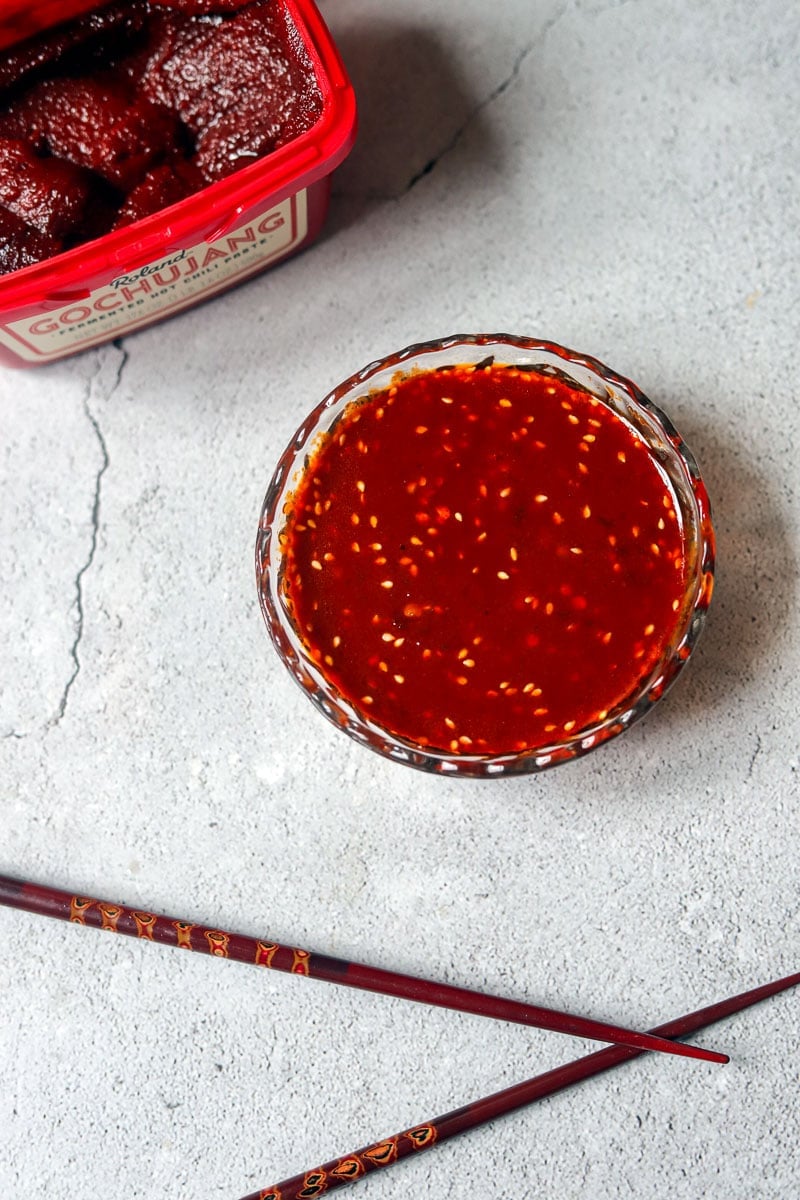
Warning! This bibimbap sauce recipe is HIGHLY ADDICTING! You probably already know that if you're into Korean food. Bibimbap Sauce is sometimes referred to as Gochujang sauce.
Think of bibimbap as the Korean version of a Mexican Rice Bowl, and this bibimbap sauce recipe as chili sauce.
This flavorful sauce usually accompanies Korean rice bowls which are topped with steamed or fresh veggies, a portion of protein (chicken, pork, bulgogi beef, or seafood), and a runny sunny side fried egg.
Jump to:
😍 Why You'll Love This Recipe
The hardest part of this recipe might be finding Gochujang (pronounced gow·choo·jang), a Korean fermented red chili pepper paste. Luckily, you can purchase a tub of it on Amazon for under $7. You can use Gochujang in many other dishes, including this yummy Creamy Gochujang Pasta recipe.
This Bibimbap Sauce recipe is as easy as it is delicious. To make it, toast the sesame seeds and whisk the ingredients together. If you're vegan, this Korean chili sauce is vegan-friendly.
Bibimbap sauce can be prepared beforehand so that it's ready when you crave it... and believe me, you WILL crave it!
Besides stirring the sauce into a bowl of bibimbap, I love to serve it as a dipping sauce with eggrolls, spicy vegan japchae, crab rangoon, and lumpia. It's also great drizzled over mandu rice. This is a little embarrassing to admit, but if I'm being honest, I even dip tortilla chips into it like you would with salsa ranchera. 😬
🛒 What Goes Into This Recipe
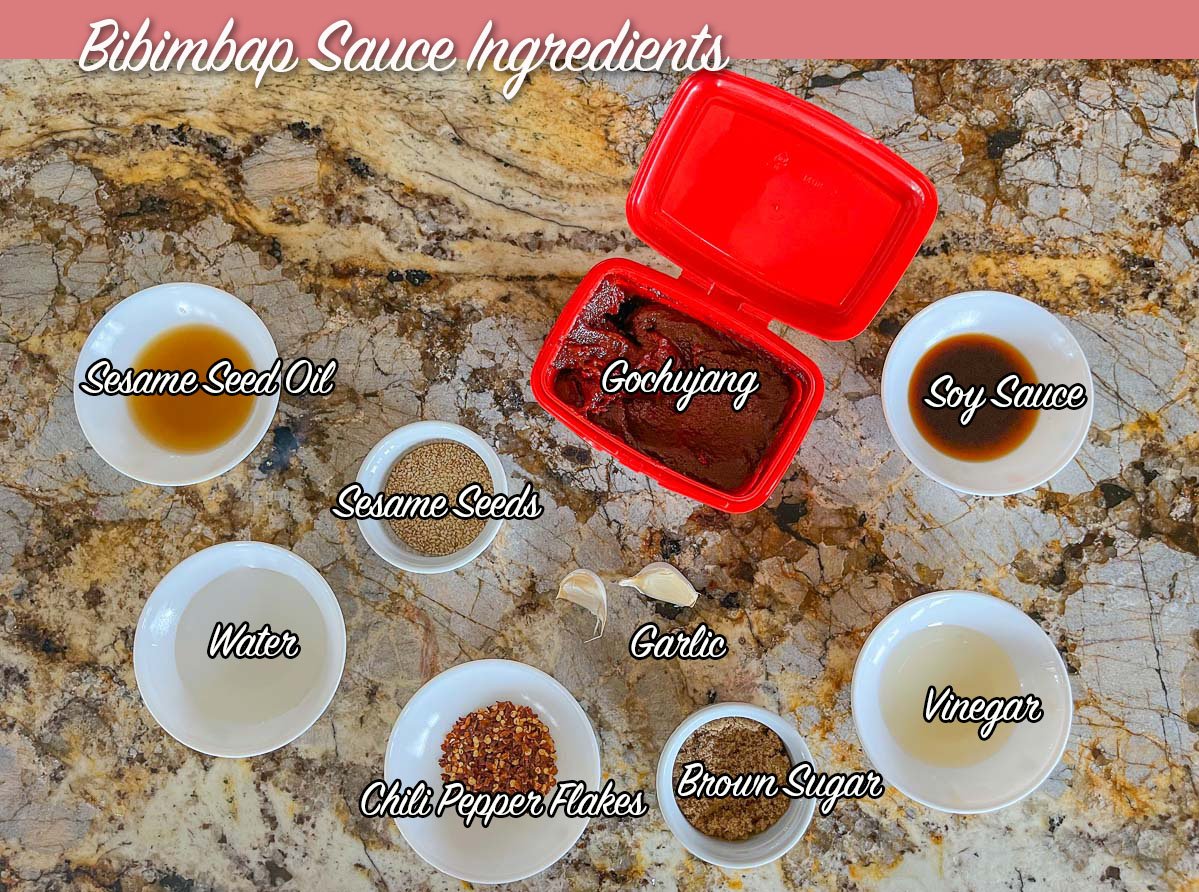
🔖 Ingredients & Substitutions
- Gochujang: Gochujang is the star of the show, so I don't recommend any substitutions.
- Soy Sauce: Regular soy sauce or low-sodium soy sauce may be used in this recipe. If you don't have soy sauce, you can substitute teriyaki sauce instead. If you do, you may need to add a pinch of salt and reduce the amount of sugar to one tablespoon.
- Vinegar: You can use rice vinegar, white wine vinegar, or apple cider vinegar.
- Toasted Sesame Seeds: Toasting the sesame seeds before adding them to the sauce brings out their nutty flavor, so don't skip that part!
- Sugar: Instead of brown sugar, you can use white sugar, honey, corn syrup, or a zero-calorie sweetener like Truvia. You'll need 1 to 2 packets.
- Crushed Red Pepper: If you are not into spicy food, you may still enjoy bibimbap sauce since it's not too spicy if you don't add pepper flakes. However, if you like spicier food, add 1 teaspoon of crushed red pepper or more to your liking.
Would you like to save this recipe?
🌶 How to Make Bibimbap Sauce
Step 1: Toast sesame seeds in a pan until golden brown. To a small bowl, add Gochujang paste, sesame oil, sesame seeds, soy sauce, vinegar, water, garlic, sugar, and crushed red pepper flakes. Whisk until the ingredients are combined and the sugar is dissolved.

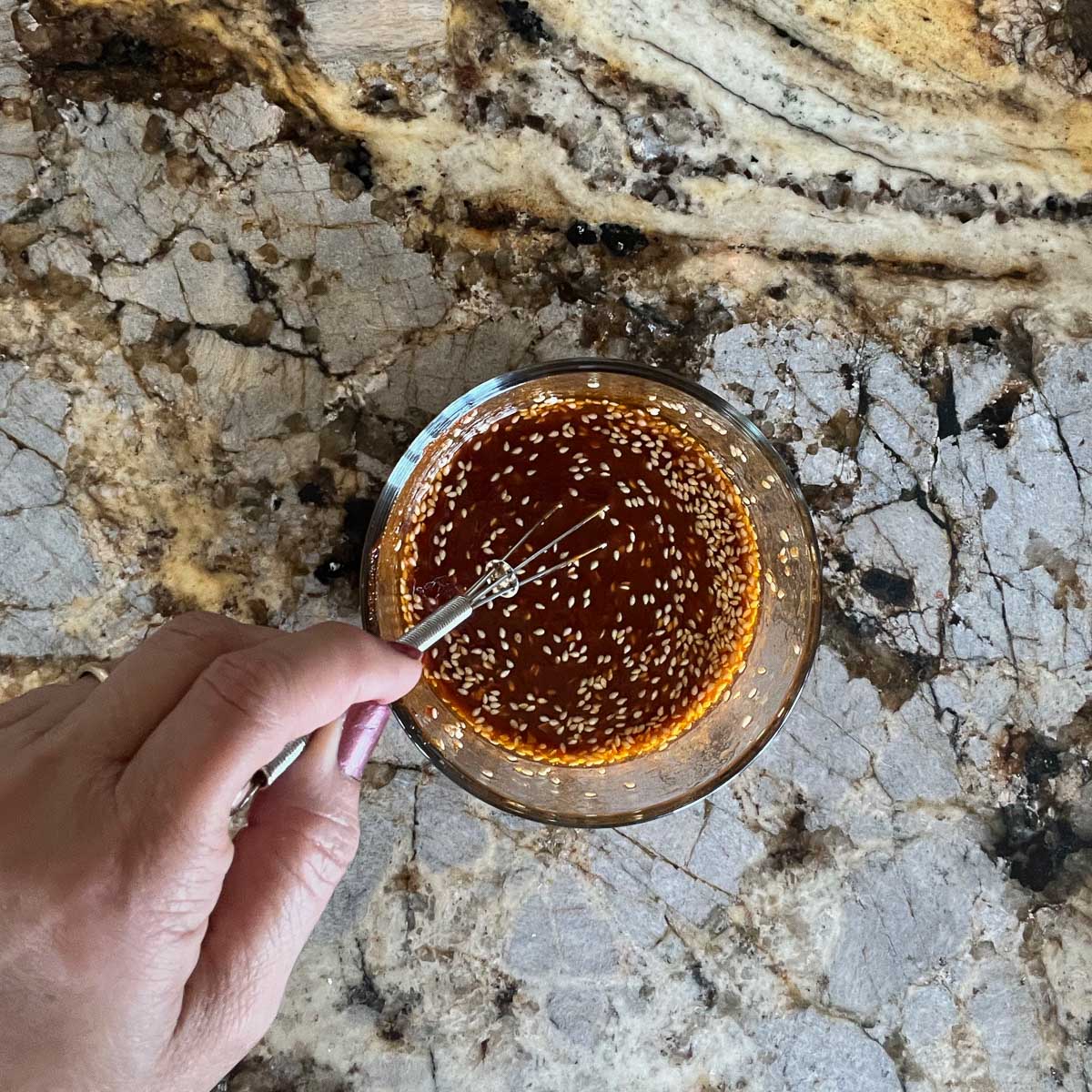
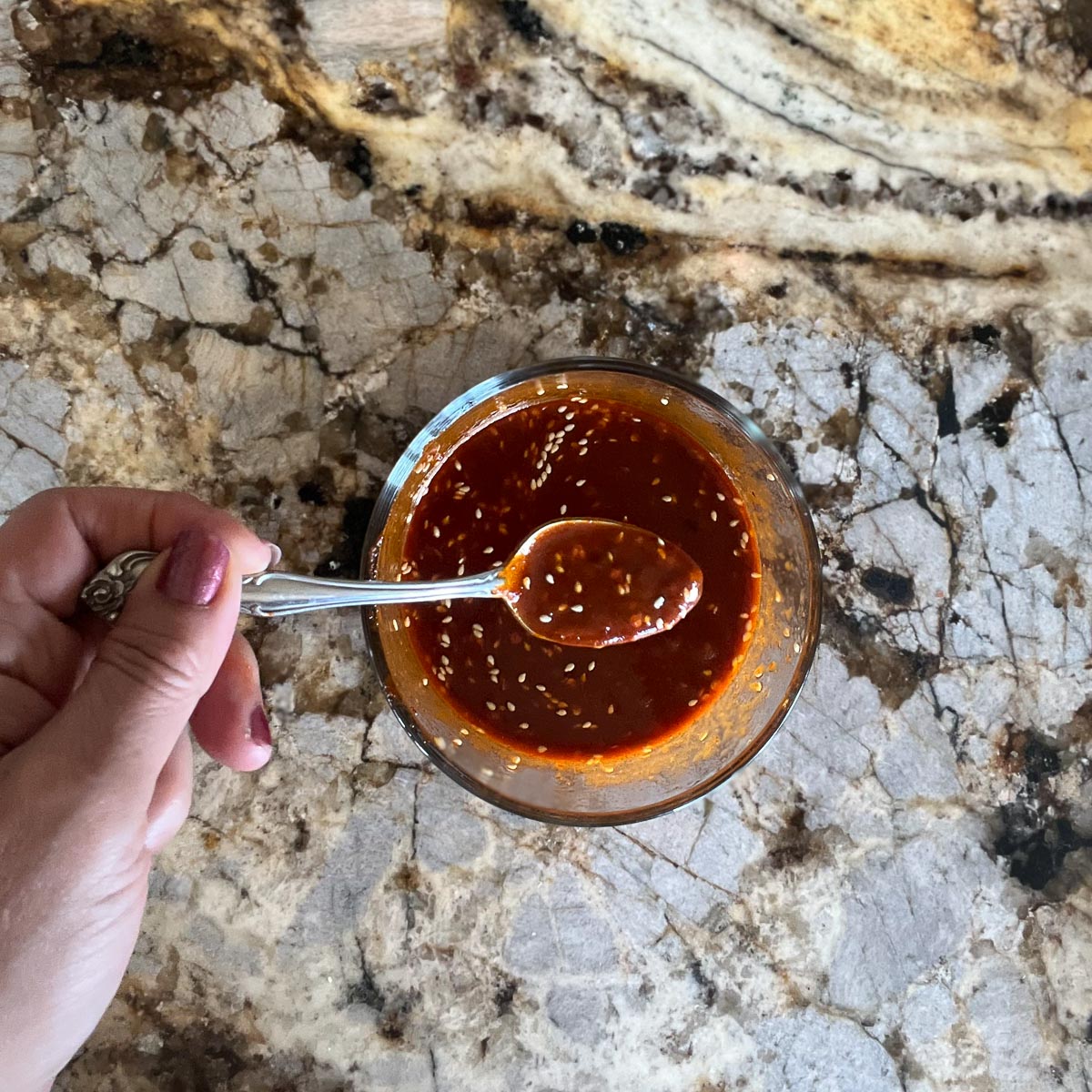
Step 2: Stir bibimbap sauce into a Korean rice bowl or serve as a dipping sauce with Asian eggrolls.

🤷🏻♀️ Recipe FAQs
"Bibimbap" is one of those fun words that I just love saying. It is pronounced "bee·buhm·baap." If you need to hear someone say it, listen to this.
In Korean, "bi bim bap" means "mixed rice." The name describes this dish perfectly since the rice, vegetables, soft egg, and bibimbap sauce are all mixed together in the bowl before eating them.
Before you can eat bibimbap you have to put a bibimbap bowl together. Start by adding white rice to a bowl and top with any of the following vegetables (carrots, bean sprouts, mushrooms, zucchini, spinach, and cucumbers). If you have kimchi, add some!
Now choose a protein (seafood, pork, beef, or chicken). To make vegetarian bibimbap, you can use tofu. Finally, add a soft-cooked egg in the middle, sprinkle with sesame seeds and scallions, and drizzle with bibimbap sauce.
Now, to eat bibimbap, break into the creamy egg yolk and stir it into the rice and other ingredients. Mix the bibimbap sauce into the rice and dig in!
👩🏼🍳 Pro Tips
- Store leftover sauce in a condiment squeeze bottle and refrigerate for up to 2 weeks.
- Shake the bottle well before using.
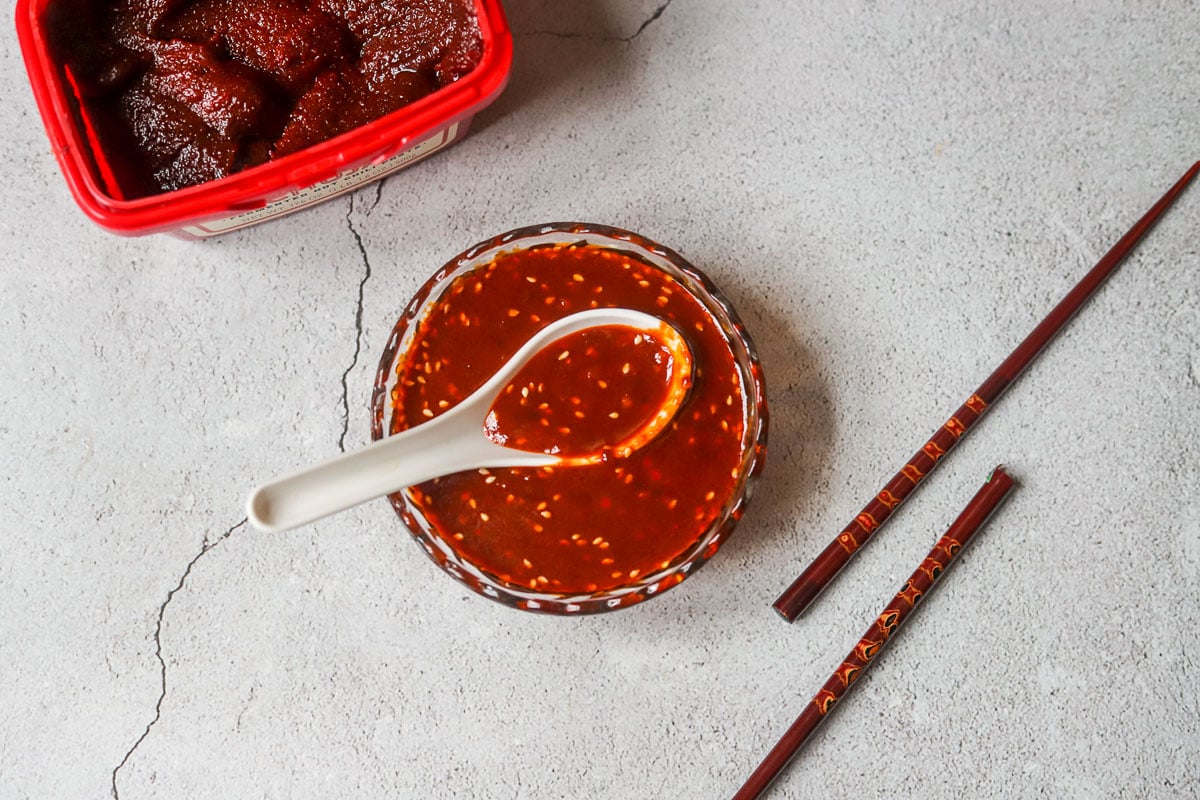
🍯 More Asian Recipes
Did you make this recipe?
📖 Recipe
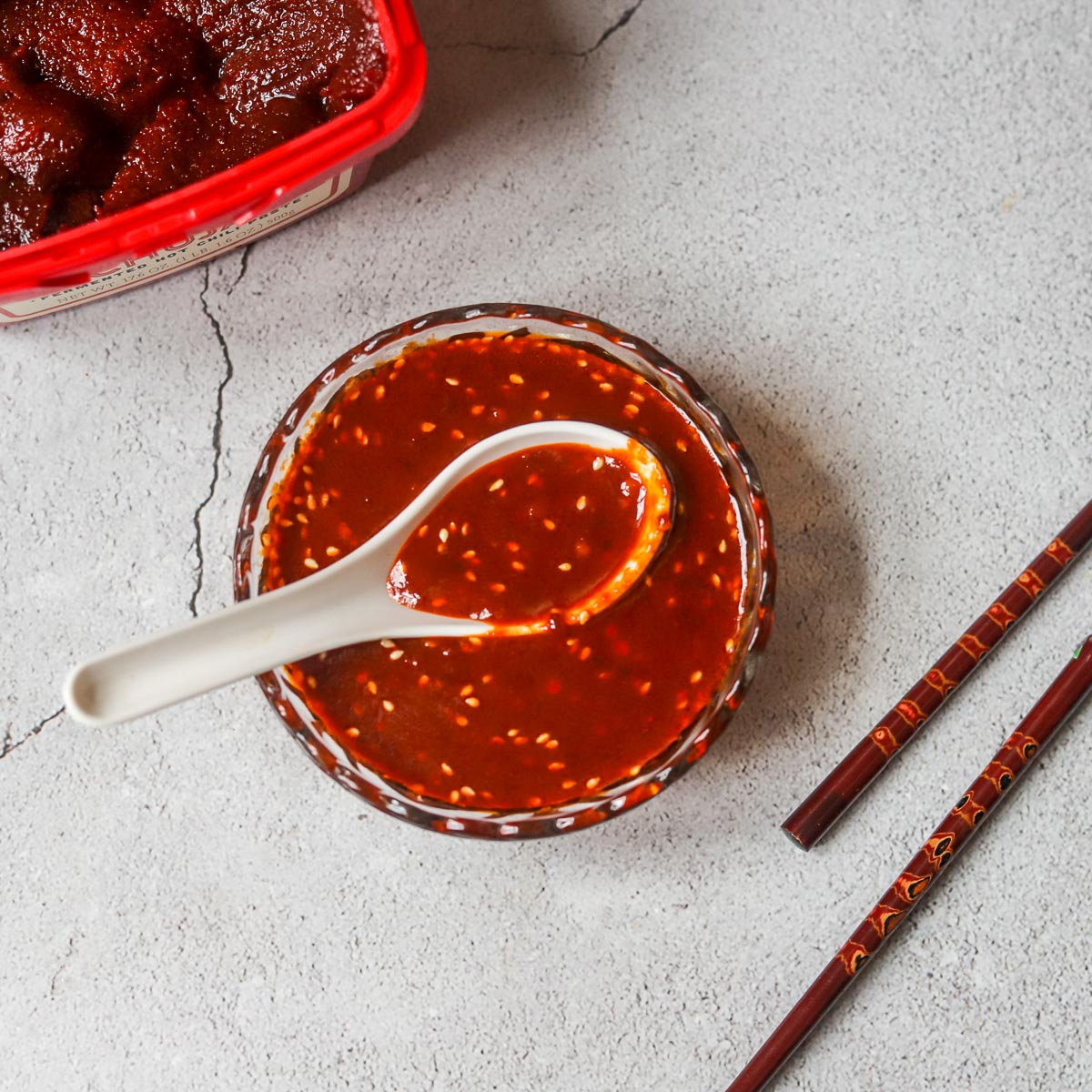
Spicy Korean Bibimbap Sauce
Ingredients
Equipment
Method
- Toast sesame seeds in a pan until golden brown. To a small bowl, add Gochujang paste, sesame seed oil, toasted sesame seeds, soy sauce, vinegar, water, garlic, sugar, and crushed red pepper flakes. Whisk until the ingredients are combined and the sugar is dissolved.
- Stir bibimbap sauce into a Korean rice bowl or serve as a dipping sauce with Asian eggrolls.
Nutrition
Video
Notes
- Store leftover sauce in a condiment squeeze bottle and refrigerate for up to 2 weeks.
- Shake the bottle well before using.

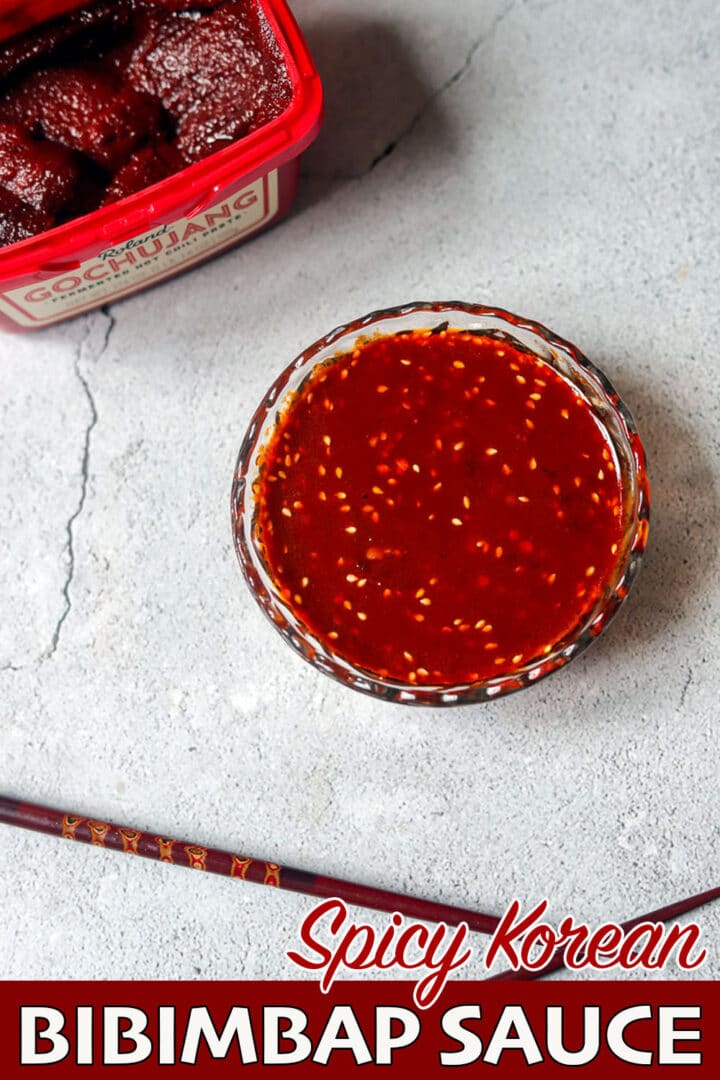
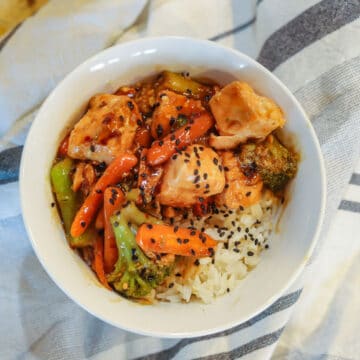
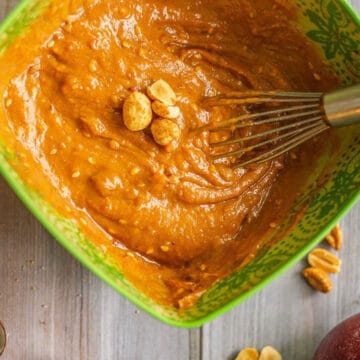
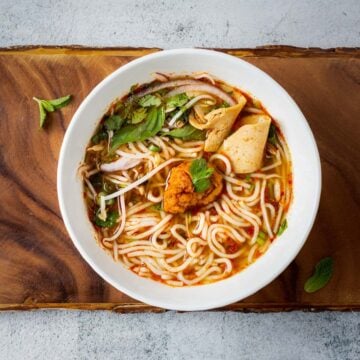
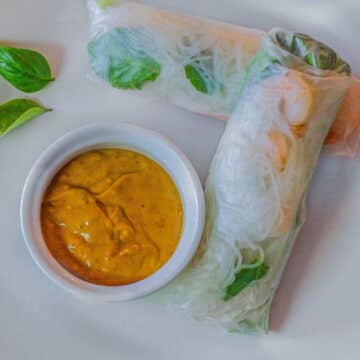
Sarah R says
I wish I could fill a bath with this and just sit there with a straw and make myself sick. Too far? Probably.
Hilda Sterner says
ummm...